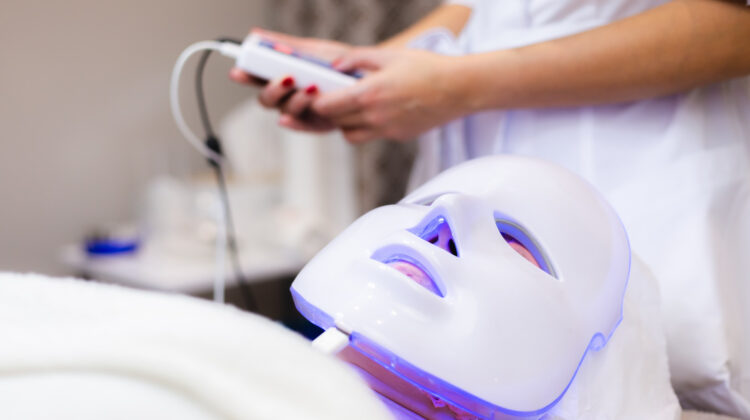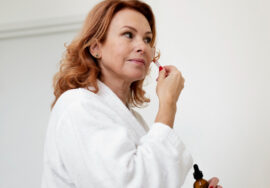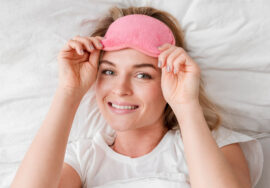
LED Light Therapy Over Fillers: The Safer Beauty Trend in 2025
Introduction: The Rise of Non-Invasive Beauty
In 2025, the beauty & personal care industry is experiencing a major shift. For years, dermal fillers have been the go-to solution for those seeking youthful skin, plump lips, and smoothed-out wrinkles. But growing concerns over side effects, downtime, and long-term risks are steering consumers toward safer, non-invasive alternatives—leading to the surge in LED light therapy.
LED light therapy promises to boost skin health naturally, without needles or synthetic injections. It’s backed by research, easy to use, and now more accessible thanks to at-home devices.
Why Fillers Are Losing Popularity
While fillers can offer immediate results, their drawbacks are becoming more widely discussed:
- Risk of Side Effects: Bruising, swelling, asymmetry, and in rare cases, vascular complications.
- Maintenance Costs: Most fillers require touch-ups every 6–12 months.
- Overfilled Appearance: Repeated treatments can lead to an unnatural look.
- Migration Concerns: Some fillers can shift from their original placement over time.
With more consumers prioritizing safety and long-term skin health, interest in natural collagen stimulation and non-invasive treatments is on the rise.
The Science Behind LED Light Therapy
LED (Light Emitting Diode) therapy uses specific wavelengths of light to penetrate the skin at varying depths. Unlike laser treatments, LED light doesn’t cause damage—it works by stimulating skin cells to perform better.
Key Wavelengths in Beauty & Personal Care Devices:
- Red Light (630–700 nm): Boosts collagen production, reduces fine lines, and improves elasticity.
- Blue Light (405–470 nm): Targets acne-causing bacteria, reducing breakouts.
- Near-Infrared Light (700–1200 nm): Penetrates deeper to reduce inflammation and support healing.
Benefits of LED Light Therapy Over Fillers
- Non-Invasive and Painless
No needles, no recovery time, and no risk of filler-related complications. - Supports Natural Skin Function
Stimulates collagen and elastin naturally instead of replacing lost volume with synthetic materials. - Safe for Most Skin Types
Gentle enough for sensitive skin and can be combined with other skincare treatments. - Long-Term Improvements
With consistent use, LED light therapy improves skin health over time rather than offering a temporary quick fix. - Cost-Effective
Investing in a quality at-home LED device can be more affordable than repeated filler sessions.
LED Light Therapy Trends in 2025
1. At-Home LED Masks
Once exclusive to clinics, wearable LED masks now let users enjoy professional-grade treatments from home.
2. Multi-Wavelength Devices
New devices combine red, blue, and near-infrared light for customized treatments targeting multiple skin concerns.
3. Portable LED Wands
Compact devices for spot treatments—perfect for targeting fine lines or acne-prone areas.
4. Combination Therapies
Clinics are pairing LED therapy with facials, microcurrent, and prebiotic skincare for enhanced results.
How LED Light Therapy Compares to Fillers
| Feature | LED Light Therapy | Fillers |
| Invasiveness | Non-invasive | Invasive (injections) |
| Downtime | None | 1–7 days depending on treatment |
| Risk of Complications | Very low | Moderate to high |
| Results Timeline | Gradual (weeks to months) | Immediate |
| Longevity | Improves skin over time | 6–12 months, requires upkeep |
| Cost Over Time | Lower with at-home devices | Higher due to repeat sessions |
Maximizing Results with Beauty & Personal Care Products
LED therapy works best when paired with the right skincare. Light can help active ingredients penetrate deeper, so using targeted beauty & personal care products can enhance results:
- Hydrating Serums: Hyaluronic acid helps plump and hydrate skin.
- Antioxidant Formulas: Vitamin C and green tea extracts protect against free radical damage.
- Collagen-Boosting Creams: Peptide-rich formulas complement LED’s anti-aging benefits.
- SPF: Always protect post-treatment skin with a broad-spectrum sunscreen.
How to Use LED Light Therapy Safely
- Choose the Right Device
Look for FDA-cleared devices with multiple light settings and clear safety instructions. - Follow Recommended Usage
Most devices suggest 10–20 minutes per session, 3–5 times a week. - Prep Your Skin
Start with a clean face; avoid heavy makeup or SPF before treatment. - Stay Consistent
Results build over time—regular use is key to seeing improvements. - Avoid Eye Damage
Use built-in eye protection or provided goggles for LED masks.
Affiliate Marketing Opportunities
For an affiliate-focused beauty & personal care website, LED light therapy presents multiple product promotion opportunities:
- LED Masks and Wands: FDA-approved, high-quality devices.
- Complementary Skincare: Serums and creams designed for use with LED therapy.
- At-Home Spa Kits: Bundles including LED devices, masks, and relaxation tools.
- Supplement Recommendations: Collagen powders or vitamins to support skin health from within.
By educating your audience and offering trusted recommendations, you can position your site as a go-to resource for safe, effective beauty trends.
The Future of LED Light Therapy
In 2025, LED technology is advancing rapidly. Expect:
- App-Integrated Devices: Personalized treatment plans based on your skin goals.
- AI Skin Analysis: Devices that scan skin and adjust wavelengths automatically.
- Sustainable Designs: Rechargeable, eco-friendly devices with longer lifespans.
With more emphasis on preventive care and holistic beauty, LED light therapy will likely become a standard tool in at-home skincare routines.
Conclusion: A Safer Path to Timeless Skin
While fillers still have their place for immediate, dramatic results, LED light therapy offers a gentler, longer-lasting path to skin rejuvenation. It works with your skin’s natural processes, promotes overall health, and fits into a holistic beauty & personal care routine.
For anyone looking to age gracefully without needles, LED light therapy in 2025 is not just a trend—it’s a movement toward safer, smarter skincare.







